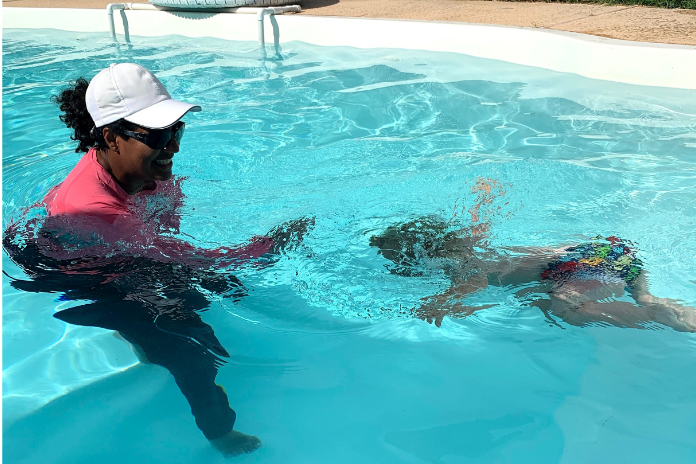
When it comes to summer and fun, swimming and water are high on everyone’s list. But if you have littles, then you want to be fully aware of how to practice water safety.
According to the U.S. Centers for Disease Control and Prevention (CDC), drowning is the number one cause of accidental death for infants and young children between the ages of 1–4. This can happen silently, in a matter of only seconds.
Supervise
Never assume someone else is watching your child in the water. If you are with other adults, talk about trading times so that someone is always 100% watching them. When possible, this should be one adult to one child, but even if one adult is watching a couple of kids, it is helpful to have a designated watcher. If your child already knows how to swim, don’t become too comfortable with them in the water. They should still be supervised. In addition, do not assign older kids to watch younger kids near water.
Be mindful that even small amounts of water can be dangerous, so look for water in unexpected places as well.
Gates and Alarms
Ensure home pools are completely fenced in with locks and alarms. Gates and alarms ensure wandering children won’t accidentally get into the pool area—if the gate or door opens, it will alert adults.
Teaching Moments
When in bathtub or water of any kind, make sure you talk to your children about not submerging their faces in water. Just like you would warn them about a hot stove, talk to them about the dos and don’ts of water.
The American Red Cross also has some cool free resources for teaching water safety.
Swim Lessons
Swim lessons are invaluable, the earlier the better. The American Academy of Pediatrics (AAP) recommends all children take swim lessons. For younger children, opt for Infant Survival Swimming or Infant Self-Rescue (ISR).
Both of my children learned to swim this way. The key technique is teaching children as young as six months to float on their backs, then flip over and swim, float, etc. until they reach safety or the edge of the pool.

During ISR, there is a test at the end with your child fully dressed in winter clothes and tennis shoes. This test is to ensure children know how to survive even when weighed down with clothes.
They will likely need refresher lessons each year for a few years, but I can tell you the peace of mind is worth every penny. Even if your children have already had swim lessons and know how to save themselves in water, you can never be too cautious.

Know CPR
Learning CPR can help save a life. You may want to learn this regardless of whether you own a pool or not. CPR is necessary when someone falls into a pool and starts breathing in water.
Other Tips to Note
Bathtubs
Never leave your child unattended in a bathtub for any amount of time. Once they reach an age of safety—American Academy of Pediatrics recommends age five—opt for showers or short baths.
Toilets
Consider putting locks on toilets. Young children who start to walk are enticed by even small amounts of water.
Floaties
Floaties often give parents a false sense of security. Do not trust floaties to save children in the water. When on a boat, a safety jacket or life preserver is the only floatation device that children should wear. Puddle Jumpers actually put your child in an upright position, which does not teach them to swim. They are marketed to parents as a safety device that teaches young children to swim, but the floats orient children in a position for drowning, which means these can actually be more of a danger. See this post for more information on puddle jumpers.
Bathing Suits
Always choose dark-colored swimsuits for easy spotting in the pool (or brighter suits to contrast with lakes or natural bodies of water).













